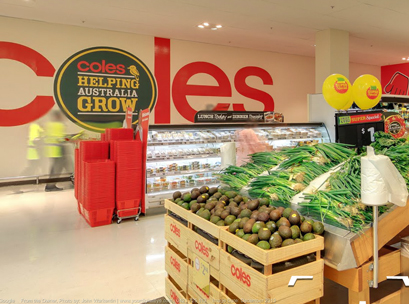
Supermarket giant Coles delivered its 46th consecutive quarter of growth off the back of its Fresh Stikeez collectables campaign earlier this week, enjoying a 2.4 per cent increase in comparable sales over the third quarter.
However, the promotion was not as successful as the group’s Little Shop campaign, which delivered a massive 5.1 per cent spike in comparable store sales during the first quarter of 2019, and Coles managing director Steven Cain doesn’t expect the boost to contribute much to the upcoming Q4 period.
“It’s hard to read the underlying numbers at the moment, so we’re making more of a forecast than we normally would,” Cain told analysts on a call on Monday.
“But what we’re really saying is that we don’t expect to achieve the Stikeez result in Q4 – however, if inflation turns out to be higher than we expect, then the result could be different.”
The collectables campaigns have been driving strong sales at the newly independent supermarket. Cain attributed the increased performance in the final weeks of Q3 to the Fresh Stikeez campaign, but cautioned that customer interest in such marketing ploys may be beginning to fade.
The Coles boss spoke of “promotional fatigue” in the marketplace, though he also added that the supermarket hadn’t expected Stikeez to have the same impact that Little Shop had and that it had “achieved its objectives”.
Working on convenience
Despite the increased performance across both the group’s supermarket and liquor categories, Cain was the first to note the business is behind the competition in regards to the convenience category.
“We’ve established a dedicated merchandise team for convenience, and obviously we’ve been experimenting with Coles Local and Coles Express standalone stores as well,” Cain said.
“We’re rapidly changing in that space, but … it will take us a period of time to get back on an even keel.”
Coles opened the first Coles Local store in the Surrey Hills suburb of Melbourne in November. The smaller-format store – it’s around half the size of a traditional full-line Coles supermarket – is tailored to the surrounding area, giving the community the convenience of a supermarket with the character of a speciality store.
“Ultimately, the challenge for us as a business is to get our share of the convenience basket, which we’re not achieving,” Cain said.
“We are growing our baskets, and we are growing our transactions. We believe that we can do a better job with the convenience customer, and we’re setting up the business to do that going forward.”
According to Cain, the plan moving forward is to make it as easy as possible for convenience customers to get in and out quickly, reducing the barrier of time from its Local and Express offerings.
The goal: to double online
Additionally, Coles Online delivered a 27 per cent increase in sales. The online business surpassed $1 billion in sales over a rolling 12-month period, largely propelled by the popularity of the brand’s click-and-collect offering as well as improved profitability.
Click-and-collect is improving at a rate “north of the average” and faster than its home delivery option, though Cain wouldn’t specify the exact rate of growth.
With the recently announced partnership with world-leading home-delivery business Ocado, Cain expects the supermarket to be able to double its capacity for online business over the next few years.
“Clearly what we want to do is to have a profitable online business, and it’s very important that we try and align supplier demand with people who are prepared to cover the costs incurred by home shopping,” Cain said.
“That will naturally drive people into click-and-collect.”





